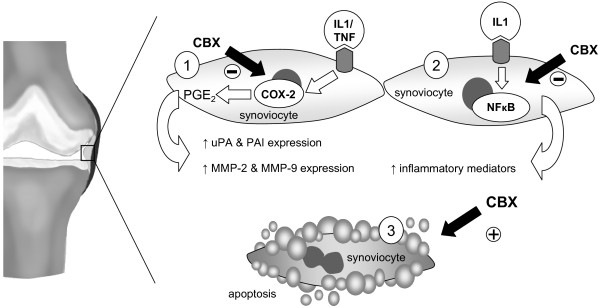Figure 2.
Schematic representation of the major actions of celecoxib (CBX) in synovium. In osteoarthritic synovium, increased levels of IL-1β and TNF-α stimulate the expression of cyclooxygenase (COX)-2 and the ensuing production of prostaglandin E2 (PGE2). PGE2 augments the expression of proteolytic enzymes, including matrix metalloproteinases (MMPs) and urokinase-type plasminogen activator (uPA), thereby contributing to the destruction of the articular joint. Celecoxib has a beneficial effect on synovium through its inhibition of COX-2 (1). In addition, celecoxib inhibits IL-1β-induced activation of NF-κB, and hence diminishes the expression of various inflammatory mediators (2). A third potential favorable effect of celecoxib on synovium is its induction of apoptosis in synovial fibroblasts (3). This would theoretically contribute to decreased synovial hyperplasia and reduced expression of inflammatory mediators. PAI, plasminogen activator inhibitor.

